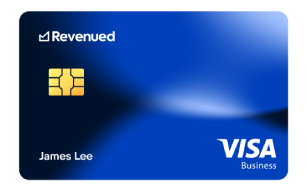Increase Revenue With These 10 Easy-to-Follow Steps
Increase Revenue With These 10 Easy-to-Follow Steps
Looking for ways to increase revenue in a business without overhauling your entire strategy? Whether you're a startup or an established small business, these tips can help grow your top line. Luckily, you don’t have to reinvent the wheel — there are many tried-and-true steps you can take to increase your sales and give your revenues a boost.
Keep in mind that any new tactic you undertake to increase sales should make sense for your brand and your product. You should have a good understanding of your market and your customer’s needs and motivations, and any new effort to increase revenue should be driven with this in mind.
If you’ve ever wondered which of the following will result in an increase in revenue, these ten time-tested ideas offer clear, actionable answers.
That being said, don’t be too afraid to be creative or try something new. There will always be some trial and error involved in new tactics, and you can always adjust as you go along once you see what works for your business. Here are some ideas:
10 Simple Ways to Increase Revenue
1. Upsell
Do you have a higher-end option you can offer your customers? Savvy buyers know when you’re just trying to get them to spend more money. But if you can demonstrate that you’re paying attention to the customer’s needs — and that the more expensive option will better meet those needs — upselling can actually be a positive experience for both buyer and seller.
2. Cross-sell
If your business sells multiple products or services, make sure your customers know about all of your offerings that might interest them. Banks, for example, routinely promote services such as credit cards or personal loans to customers who have checking accounts with them. Again, paying attention to customers’ needs and offering possible solutions can result in success for both parties.
3. Bundle
Bundling products or services together can also be an effective way to convince customers to spend more in one transaction. Customers associate bundles with savings, even if the discount is nominal. Keeping bundles flexible — so customers have a choice to select or substitute various elements within the bundle — can offer them even more incentive to take advantage of bundling.
4. Encourage Referrals
If your customers are happy with you, ask them to spread the word — referrals are some of the most valuable advertising you can get with the least cost. Let your customers know that you appreciate referrals and positive social media reviews.
Make sure you thank your customers when they do refer you to a friend! Rewards for referrals (such as a free product/service or a gift card) can go a long way toward incentivizing customers to share their positive experiences with people in their circle.
Referral strategies are among the most creative ways to increase revenue while minimizing marketing spend.
5. Offer Frequent Buyer or Volume Discounts
Giving discounts for larger orders encourages customers to buy more at one time than they might otherwise in order to get savings. In addition, offering loyalty rewards to customers can keep them coming back.
Many coffee shops, for example, give customers one free beverage once they’ve purchased a certain number of drinks. This offer incentivizes customers to return and gets them in the habit of patronizing that business. These types of efforts show appreciation to customers and help forge a stronger, more personal relationship with them.
6. Add Complementary Products or Services
Are there other services or products you can add that would appeal to your customers? For example, a shop that specializes in computer repair might also want to start selling refurbished computers. Just make sure that any addition makes economic sense for your business.
This can lead to increased business revenue by meeting more of your customers’ needs with each interaction.
7. Get Together With Other Businesses
Combining forces with related businesses can be a win-win situation for everyone. For example, a real estate agent might combine forces with a mortgage broker, or a catering company could pair with an event planner. These kinds of partnerships can create a lot of possibilities for cross-promotion, ranging from trading referrals to joint online marketing to sharing physical space.
8. Fine-Tune Your Pricing
Review your pricing to see where you may be able to raise prices if possible. Any price hikes must be carefully planned and implemented to avoid losing more than you gain. In some cases, it could make sense to raise prices on some products or services while lowering prices on others if that will result in an overall gain.
Price increases don’t necessarily need to scare off customers. Some ways you can soften the blow to customers include:
- Give customers plenty of warning that the price hike is coming
- Share reasons for the price increase
- Emphasize the true value of your product or service
- Raise prices when it’s time to sign a new contract
- Pair higher prices with a new sales model
When done strategically, revisiting your pricing is one of the most direct answers to the question, “how to increase revenue in a business.
9. Extend Your Geographic Market
Extending your marketing to geographic areas outside your traditional market can help you tap into a new customer base. For example, if you are a specialty store focusing on customers already in your neighborhood, you could investigate whether there are prospects in need of your product in areas farther afield.
10. Offer Sales/Promotions
One-time sales can be particularly effective in attracting new customers, who may end up buying much more than the sale item they came for. And limited-time-only sales and promotions can create more urgency for customers to buy before the sale is over. Coupons can also attract attention to your business and convince customers to choose your products or services over those of the competition.
Discounting requires some thought to make sure the advantages outweigh any negatives. Make sure you know what your goals are, do the math and consider the effects of the discount on your business’s reputation as well as your bottom line.
Building on Your Success
Not every tactic you try may result in increased sales and revenues, but when you do notice that something is working, see what you can learn from your success. Ask yourself these questions:
- Why did it work?
- What does it tell you about your customers?
- How can you apply the winning element to other tactics?
Answering these questions and using your learnings can help you build on your success to formulate your future sales and revenue strategy.
By continuously testing and analyzing what increases conversions, pricing impact, and cross-sells, you’ll build a custom blueprint for how to increase revenues sustainably.
Learn More About the Revenued Business Card
The Revenued Business Card is not a credit card – it’s a purchase of future receivables and utilizes revenue-based financing to provide a prepaid debit card. Despite not being a credit card, the Revenued Business Card can be used for purchases in-store or online, similarly to a business credit card.
Revenued looks at business revenue instead of more traditional factors like a personal credit score or business credit score to determine eligibility. This can make it an excellent option for business owners who have a limited business credit history or a poor or fair personal credit score.
So while it doesn’t extend traditional credit, you may be wondering, does credit increase revenue? With tools like the Revenued Card, access to funding based on sales instead of credit score can help you unlock new purchasing power and revenue opportunities.
It’s important to note that although there are no draw fees or interest charges with the Revenued Business Card or Flex Line, there is a factor rate which may end up being more expensive than a conventional business loan. It’s important to weigh the pros and cons when making any financing decision for your business, and if your personal credit score or timing are at the top of your list of deciding factors, Revenued can still be a great option to consider.
Learn more today by emailing info@revenued.com or calling +1-877-662-3489 and see if Revenued is right for you.
IN THIS ARTICLE
RELATED ARTICLES
Revenued Business Flex Line vs Ecommerce Revenue Based Financing
Learn MoreRevenued Flex Line Pricing vs. (MCA): A Comparative Analysis
Learn MoreWhat is My Business’ Credit Utilization Ratio?
Learn MoreWhy is Cash Flow Important to Your Business?
Learn More
Boost your spending power with the Revenued Business Card
Only pay for what you use at gas stations, hotels, supply stores, supermarkets and more.
Take control with the Flex Line
Check your available balance online and request a cash draw with the tap of your finger, anytime.

